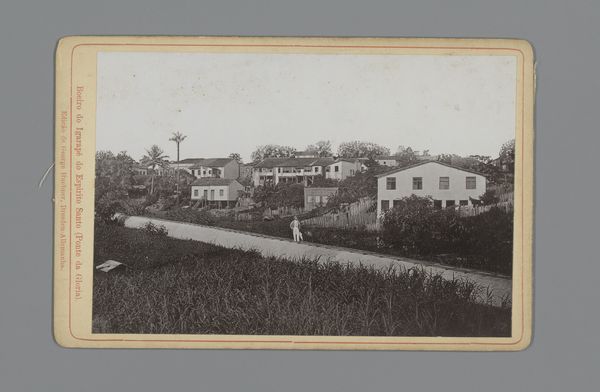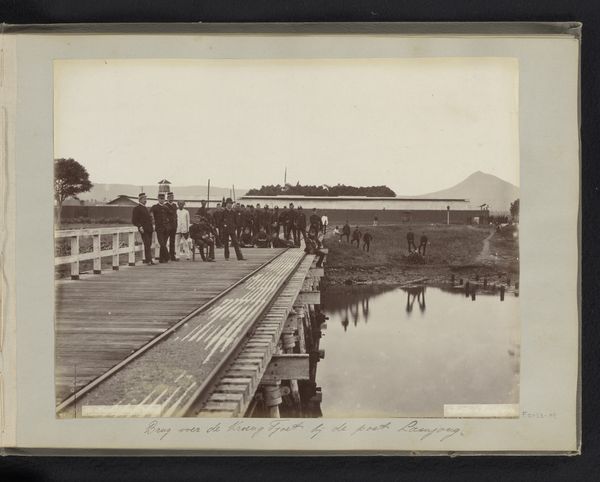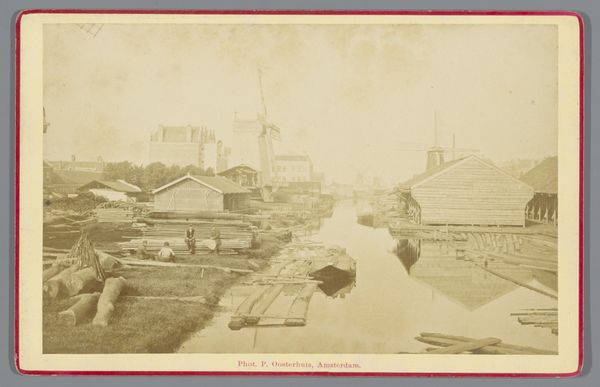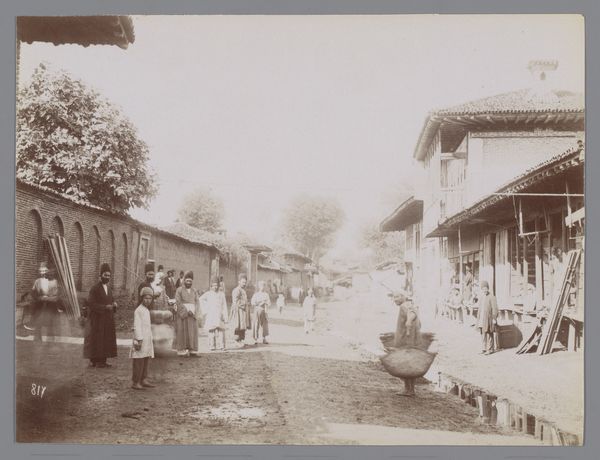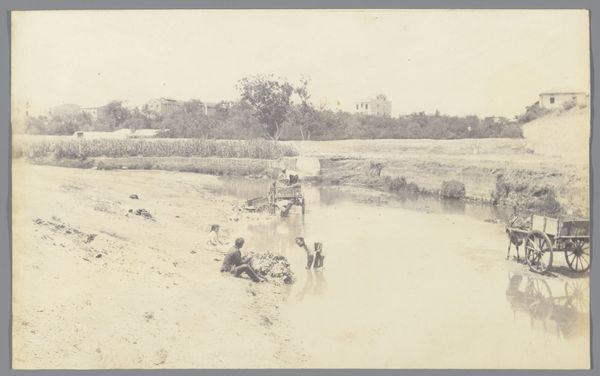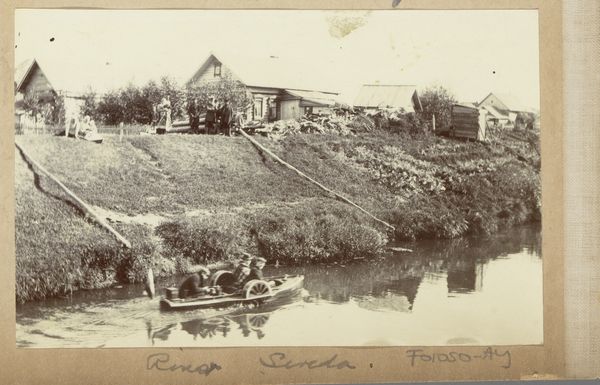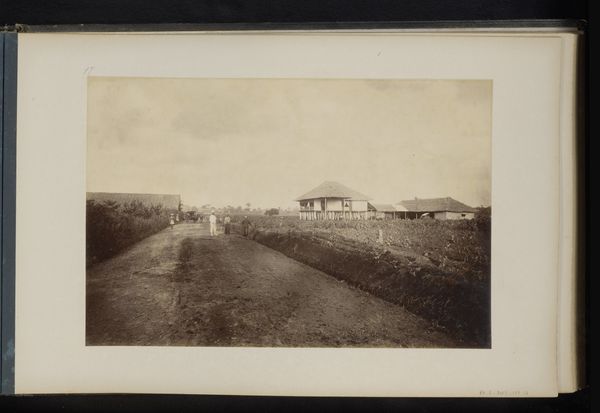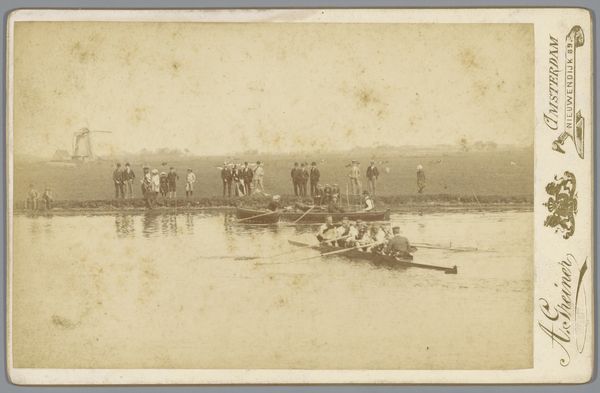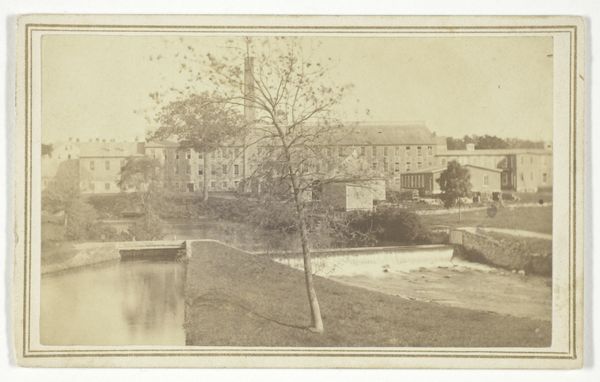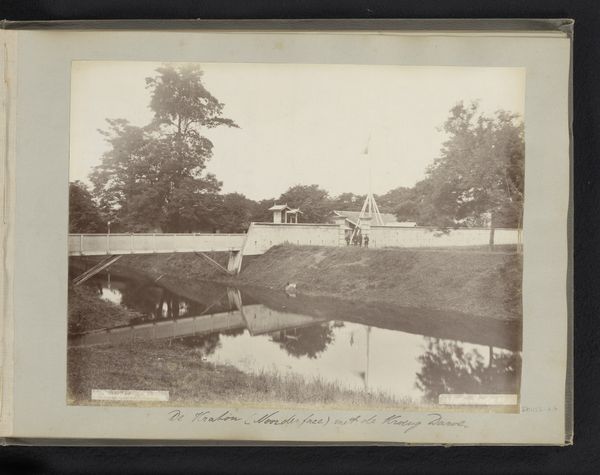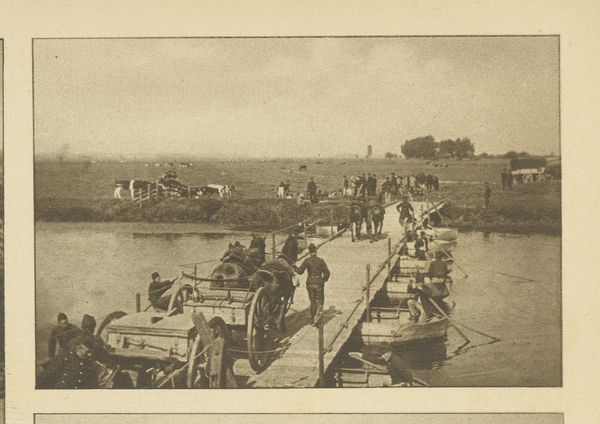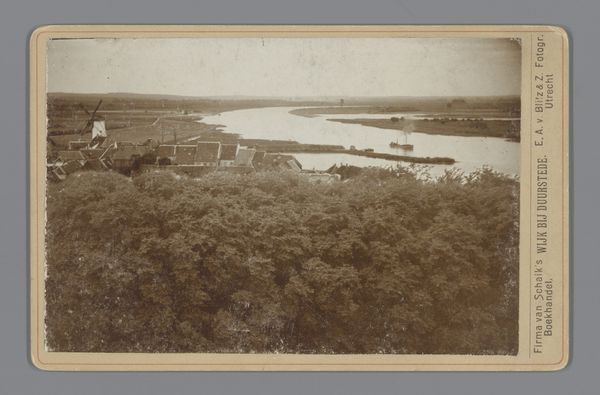![Gezicht op een goederen-omslagplaats/haven [?] in Pir Bazar, Iran by Antoine Sevruguin](/_next/image?url=https%3A%2F%2Fd2w8kbdekdi1gv.cloudfront.net%2FeyJidWNrZXQiOiAiYXJ0ZXJhLWltYWdlcy1idWNrZXQiLCAia2V5IjogImFydHdvcmtzLzdlMDA0ODY4LTE3NGEtNGQ0MC04YmQ5LTFhMWQwNjY4MmE4ZC83ZTAwNDg2OC0xNzRhLTRkNDAtOGJkOS0xYTFkMDY2ODJhOGRfZnVsbC5qcGciLCAiZWRpdHMiOiB7InJlc2l6ZSI6IHsid2lkdGgiOiAxOTIwLCAiaGVpZ2h0IjogMTkyMCwgImZpdCI6ICJpbnNpZGUifX19&w=3840&q=75)
Gezicht op een goederen-omslagplaats/haven [?] in Pir Bazar, Iran c. 1885 - 1910
0:00
0:00
photography, albumen-print
#
portrait
#
landscape
#
photography
#
orientalism
#
islamic-art
#
albumen-print
Dimensions: height 153 mm, width 204 mm
Copyright: Rijks Museum: Open Domain
Curator: Looking at this albumen print dating from around 1885 to 1910, we see Antoine Sevruguin's "View of a Goods Transfer Station/Port [?] in Pir Bazar, Iran." Editor: It’s so muted, almost sepia-toned throughout. My immediate sense is one of a faded grandeur. The tonal unity here lends it an almost dreamlike feel, especially the still water reflecting those skeletal masts. Curator: Exactly. Sevruguin’s work offers a critical window into late 19th-century Iranian society, captured during a period of increasing Western influence. We see a bustling port scene, men gathered along the shore, goods being transported – a snapshot of Iran’s burgeoning commerce. This, of course, comes at a historical price, as early photography often served as a tool for colonial documentation and exoticization. Editor: That tension is interesting. Formalistically, the composition is striking—the horizontal layering of figures, the textures of crates and clothing contrasting against the placid water. Notice the building; the stark linear construction contrasts with the men along the shore. This creates a powerful depth of field pulling you back to consider architecture. Curator: The building definitely contrasts with the surrounding workers in the image and invites us to question the relationships between class, labor, and visual representation. How does Sevruguin’s lens position the Iranian subject in relation to modernity, in relation to tradition, in relation to power? Editor: I agree, we must be mindful of power, but that doesn’t negate careful consideration of photographic tools. Consider how light emphasizes form and texture. Look at the reflection in the water – it doubles the impact, transforming a utilitarian space into a field for pattern and abstraction. Curator: I suppose, through an intersectional reading, this piece becomes less a straightforward portrayal and more a complex interplay of historical context, colonial gaze, and individual agency. Editor: So, perhaps it is not an objective historical record, but the formal arrangement encourages visual questions to arise with a focus on structure, materiality and light that encourages dialogue and multiple interpretations. Curator: Indeed. Understanding the multi-layered, complicated story embedded within the seemingly still, serene visual image requires thought. Editor: Well, I will walk away seeking what this still, serene visual image has left unfaded in my memory of visual structures.
Comments
No comments
Be the first to comment and join the conversation on the ultimate creative platform.
